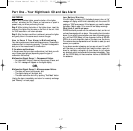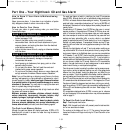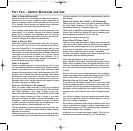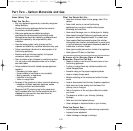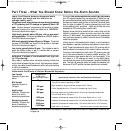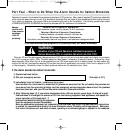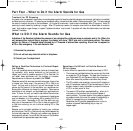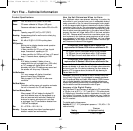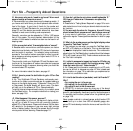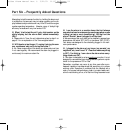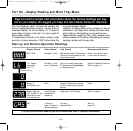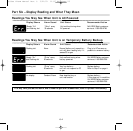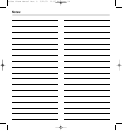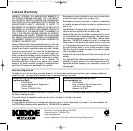
Part Six – Frequently Asked Questions
Attempting to test the sensor function by holding the alarm next
to a tailpipe or furnace vent may not cause a reading on the dis-
play because today’s vehicles emit very little CO once the engine
reaches operating temperature. Likewise, many of today’s high
efficiency furnaces emit very low levels of CO.
Q. When I tried to test the unit I got a high number on the
digital display, but the alarm didn’t sound immediately.
Why?
A. Please refer to “How the unit determines when to alarm” on
page 5-1 for an explanation of the “time weighted alarm.”
Q. Will the alarm last longer if I unplug it during the sum-
mer months and only use it during the winter?
A. No. Some components of the alarm can deteriorate over time
if not used regularly. We recommend the alarm be plugged in
continuously for maximum alarm life.
Q. I use the alarm in a vacation home that isn’t always
occupied and can have temperature extremes when no one
is there (no heat or no air conditioning). Will that hurt the
alarm? Should I leave it plugged in all the time?
A. We recommend that your alarm not be installed in areas where
temperatures fall below 40˚F (4.4˚C) or rise above 100˚F (37.8˚C).
Your alarm was designed to be constantly plugged in for maxi-
mum performance.
Q. I plugged in the alarm at my house (my parents’, my
neighbors’, etc.) and it read “0.” Does that mean everything
is OK? (I’m thinking I can return the alarm since every-
thing checks out OK.)
A. This alarm is designed to act as a continuous
monitor, it is not
designed for use as a short-term testing device to perform a quick
check for the presence of CO or Gas.
Remember, a problem can occur at any time, even after a pro-
fessional inspection has determined that everything is in proper
working order. Examples of problems that can develop are a
crack in a furnace heat exchanger, a leak in a water heater vent,
a bird’s nest blocking a flue, or a Gas line fitting becomes loose.
6-2
CO/Gas Alarm Manual Rev. C 3/21/01 11:37 AM Page 21




